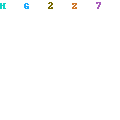1.1 Boot Disk
3.1 The While Loop
8. Pointers
10.1 Output To A File
11.1 What Is A Structure?
11.9 Pointer Arithmetic
11.11 Two More Variables
11.13 More About Structures
11.14 What Are Unions?
11.15 Another Union Example
11.17 What Do We Have Now?
12. Dynamic Allocation
12.3 What is heap?
12.4 More About Segments
12.6 What Is A Cast?
12.10 An Array Of Pointers
12.11 A Linked List
12.12 The Data Definitions
12.13 The First Field
12.15 Printing The Data Out
13. Character and Bit Manipulation
13.1 Upper And Lower Case
14. Example Programs
14.1 Why This Chapter?

